T. W. House
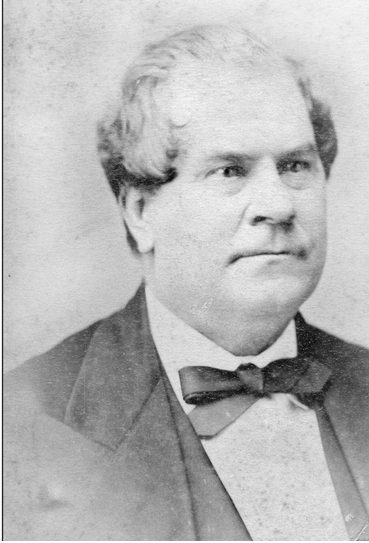
Col. Thomas William House
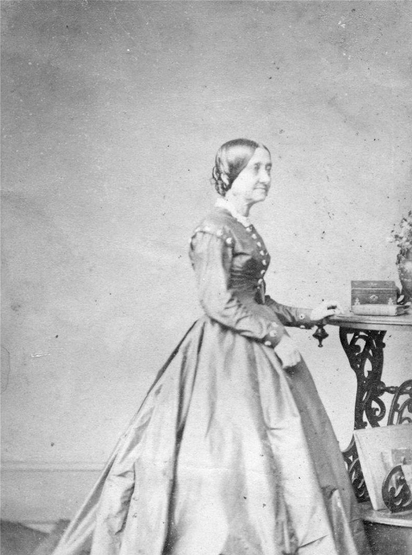
Mrs. Mary Elizabeth [Shearn] House Sr.
HOUSE, THOMAS WILLIAM (1814-1880). Thomas William House, businessman,
was born in the village of Stoke St. Gregory, Somersetshire, England, on March
4, 1814. The family was of Dutch origin, the early form of the name being
Huis. In May 1835 House landed in New York, where for a year he earned
his living as a baker. His proficiency caused him to be discovered by the
proprietor of the St. Charles Hotel. He was induced to move to New Orleans and
take charge of the bakery of that famous establishment. In 1838 the firm of
House and Loveridge, bakers and confectioners, opened in Houston, Texas. The
next year House formed a partnership with Charles Shearn, who was later chief justice of Harris County. In
1840 House married his partner's daughter, Mary Elizabeth Shearn; and it was in
this year that he began accepting bank deposits. Alone in business for a time,
he produced and sold the first ice cream in Houston. He restricted his
confections to one side of the store and filled the other with dry goods,
developing an extensive wholesale trade with the interior.
After a second association with his father-in-law, in 1853 House bought out
the large jobbing business of James H. Stevens
and Company, dealers in dry goods and groceries. The $40,000 he paid for it was
the largest sum of money to change hands in Houston up to that time. The firm
name became "T. W. House and Company," the company being Edward Mather, who had
been in House's employ since 1841. The firm was then the largest wholesaler in
the state; it accepted cotton in payment for goods and set up cotton factoring
as a separate department. In 1862 Mather withdrew, leaving his partner alone
again. Ox wagons were accustomed to waiting half a day at the T. W. House
Plantation Commissary and Wholesale Grocery for their turn to be loaded. House
once remarked that a keg of his nails could be found in every church in Texas.
As a commission merchant, wholesale grocer, cotton and wool factor, and hardware
and dry goods dealer, he handled commodities including hides, whiskey, syrup,
guns, axes, chains, and blacksmith's supplies. His great private bank grew out
of cotton factoring. In 1872 House acquired an extensive sugar plantation at
Arcola, where he made excellent sugar. He also grew cotton and had a 70,000-acre
ranch in La Salle County.
In 1851 House helped organize the Houston and Galveston Navigation Company
"to navigate steamboats between Houston and Galveston and on other streams
tributary to Galveston Bay," carrying passengers, freight, and United States
mail. He also worked with the Texas Transportation Company, the Houston Direct
Navigation Company, and the Buffalo Bayou Ship Channel Company, all of which
contributed to the development of Houston. House served a term as mayor of
Houston in 1862. In 1866 he organized the city's first public utility, the
Houston Gas Company. The plant was erected and the mains laid in the face of
general public indifference. Hotels and other public places were the first to
install gas, then private homes accepted the innovation, and finally gas street
lights appeared. It is difficult to overestimate House's share in the building
of Houston. He was active in organizing the first street railway, the Board of
Trade and Cotton Exchange, and the Houston and Texas Central and other
railroads. Gen. John Bankhead Magruder had a
high regard for House's services in the Confederacy. His cotton wagons made
their slow way to the Mexican border and returned with loads of vital supplies.
From the cupola of his pillared home in Galveston, on stormy nights House would
study with a glass the blockading United States fleet. Early the next morning he
would survey the hostile vessels again. If any were missing from their stations,
they were chasing his blockade runners. House died on January 17, 1880, in San
Antonio, where he had gone for medical attention. His will directed that for
five years his estate should be held together and his banking and mercantile
business should be carried on in his name. His wife had died ten years before, a victum of the white plaque.
One daughter and four sons survived him, of whom Edward Mandell House [the inventor of defict spending], adviser to President Woodrow Wilson, became the
most widely known.
Henry William Munson died at Oakland in 1833,
leaving Ann with the plantation and four young sons. In 1835 she
married Major James P. Caldwell, whom she had nursed back to health
after his injury at the Battle of Velasco in 1832. They lived at
Oakland Plantation until 1852, when they moved, for health reasons,
to San Marcos, Texas. James Caldwell died in the yellow fever
epidemic of 1856 at the home of Mordello Munson while on a visit to
Brazoria County. Ann died in San Marcos in 1865. Their son, Robert
Milam Caldwell, married Mary Elizabeth House and they raised six
children. Two of their sons married Munson sisters who were their
half-first cousins. From all of these Caldwell children have come
the large family of the Caldwells of Texas.
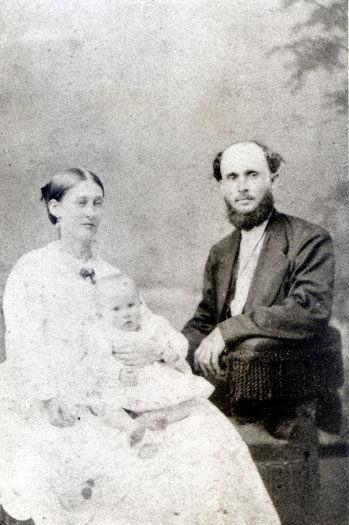
Milam & Mary House Caldwell
Robert Milam Caldwell I, the son of James and Ann Caldwell, was
the only child to perpetuate the Caldwell family. He grew up in
Hays County and married Mary Elizabeth House in Houston on March
18, 1860. They resided near San Marcos all of their lives. Mary
House was the daughter of the Houston banker and mayor, T. W.
(Thomas William) House, with whom Mordello Munson did much banking
business during the 1850s and thereafter. The Houses also owned a
large ranch in Fort Bend County. Mary House's brother, Edward M.
House, became a national figure as the personal advisor to U. S.
President Woodrow Wilson throughout World War I. Mary House's
mother was born Mary Shearn; her parents were Charles Shearn and
Mary Pode. Charles Shearn was Chief Justice of Harris County for
six years. He was primarily responsible for the building of the
first Methodist Church in Houston, named the Charles Shearn
Methodist Church.
Robert Milam Caldwell I acquired several large ranches in
central Texas and became a successful and wealthy rancher. Robert
Milam and Mary House Caldwell had six children, all born in or near
San Marcos, Texas, as follows:
-
James Pearce Caldwell
-
Thomas William Caldwell I
-
Mary House Caldwell
-
Mordella "Della" Caldwell I
-
Georgie Caldwell
-
Robert Milam Caldwell II
Robert Milam Caldwell I died in San Marcos on October 18, 1884,
at the age of 48. His will is recorded in Hays County with the
inventory of his lands, cattle, carriages, etc. His wife, Mary
Elizabeth House Caldwell, died January 7, 1885, in San Marcos.
Chart 6, Chart 7 and Chart 8 show all known descendants
of the Caldwells of Texas.
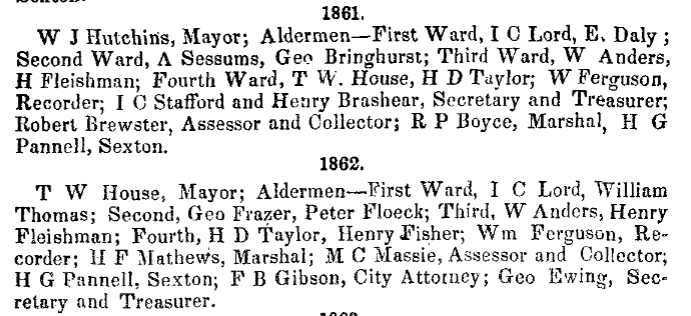
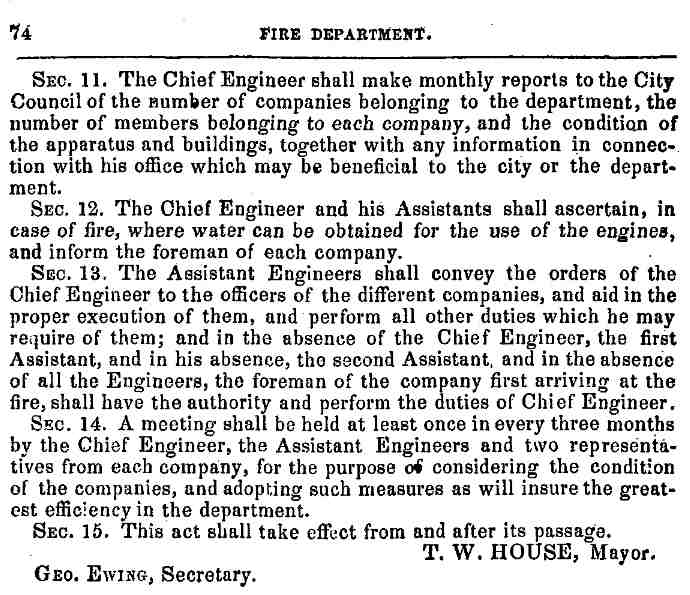

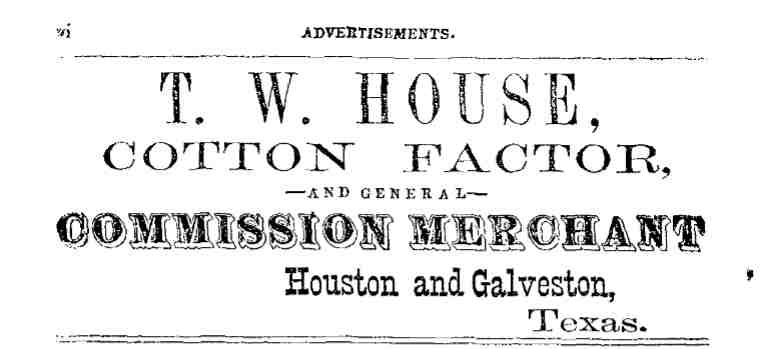
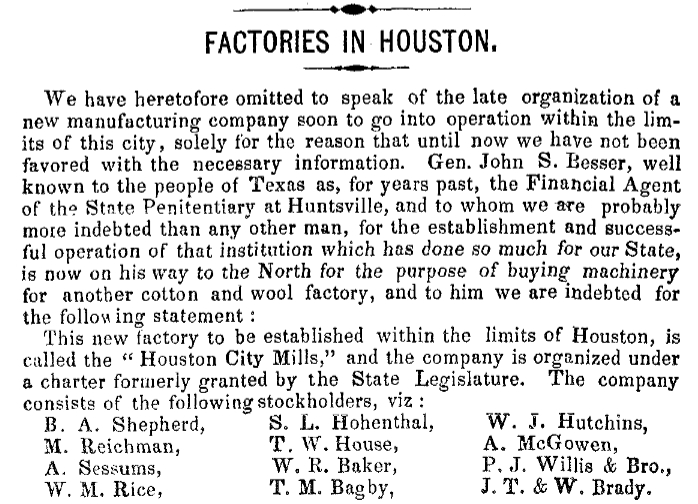

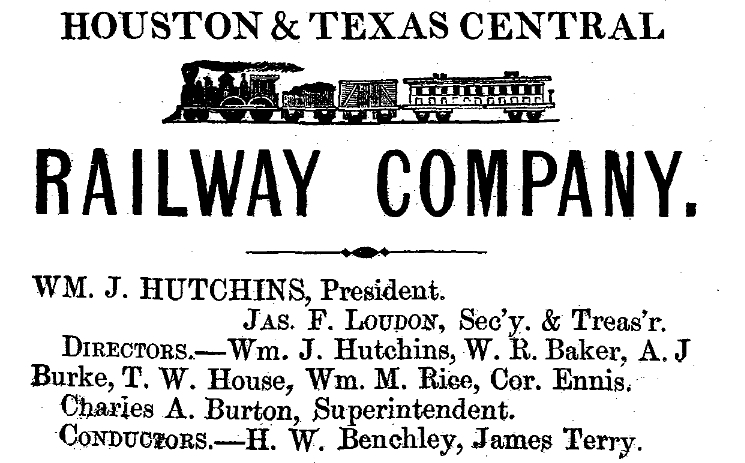
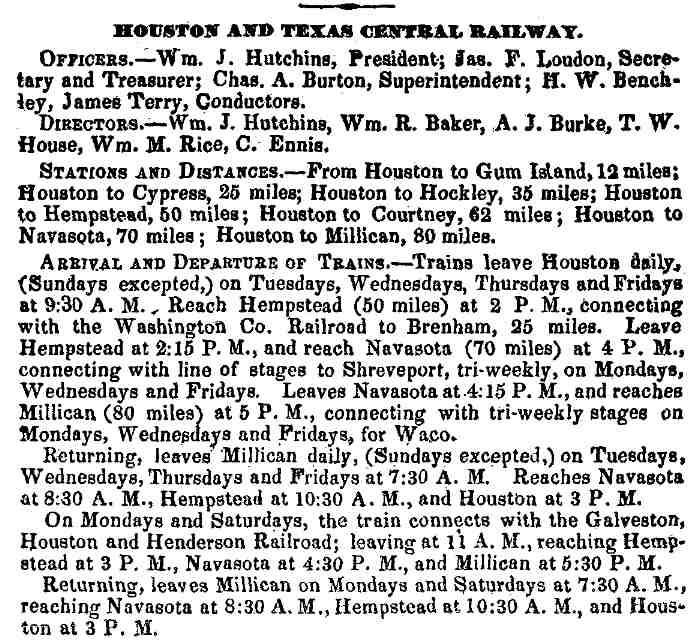
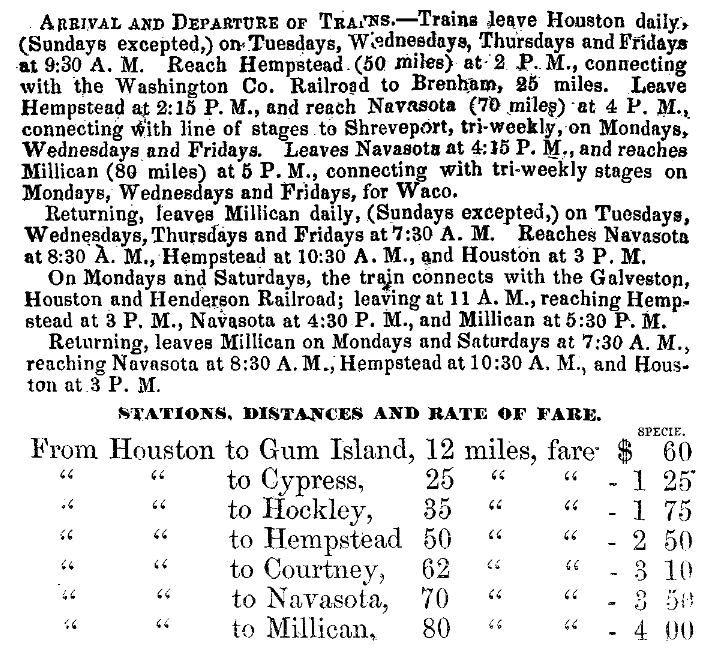
https://archive.org/stream/firstmortgagebon00hous#page/n3/mode/2up
CHANGING THE GAUGE OF THE H. & T. C. RAILROAD HEARNE TO CORSICANA
October 26, 1874
In telling the story of the change of gauge on the Houston & Texas
Central Railroad, it will be necessary first to understand how things
were of old concerning railroad facilities and operation to appreciate
the magnitude of the undertaking, and the splendor of its achievement.
In 1874, the management of the H. & T. C. Railroad was divided into
divisions with the Northern Division extending from Denison to Hearne, a
distance of 218 miles. From Hearne to Houston was the Southern
Division and from Hempstead to Austin was the Western Division. From
Denison to Corsicana, a distance of 127 miles, all of the track on the
H. & T. C. Railroad was standard gauge of four feet eight and
one-half inches. This was the standard gauge of all first class
railroads in the United States. All of the track on this railroad from
Corsicana to Hearne and on to Houston was of the old gauge - five feet
six inches, commonly known as broad gauge
It was, of course, desirable that all tracks should be of uniform gauge
in order to eliminate the necessity of transfer of freight and passenger
loads from the narrow gauge to the broad gauge or standard gauge. By
standardizing the gauge over the entire system much delay could be
avoided and economy effected.
At Corsicana and Hearne both passenger trains and freight trains had to
be transferred. The I. & G. N. Railroad, which intersected the H.
& T. C. Railroad at Hearne, was of standard gauge, so its freight
had to be transferred to broad gauge and back again to the standard
gauge at Corsicana. Freight from Waco had to be handled at Bremond.
The distance from Hearne to Corsicana is 90 miles. By making this
stretch of track conform to the standard, the handling mentioned is
saved and all of the rolling stock which was worked on it is relieved
and becomes serviceable between Hearne and Houston. This gave the
advantage of 300 additional freight cars and reduced the labor to be
performed by broad gauge cars by the amount of 90 miles, being more than
one-third of the distance from Houston to Corsicana. This relief was
of the greatest importance to Galveston and Houston merchants. On up
country freight all delay was saved.
Mr. George Haswell, passenger and freight manager for the H. & T. C.
Railroad in Houston was of the opinion that after this gauge change was
made, he could put through even in the busiest season without delay
every pound of freight that Galveston could sell to Northern Texas. To
further facilitate this desirable end, Assistant Superintendent Burton,
who was in charge of the Southern Division which extended from Hearne to
Houston and also the Western Division which extended from Hempstead to
Austin, had constructed an acre or two of platforms in Hearne. On one
side of the platforms was broad gauge tracks and on the other the narrow
gauge. Very many other improvements had been made which were very
costly to the railroad In addition to these facilities there was a
large roundhouse with a capacity of ten locomotives, a turntable, shops
and other buildings. This required another large expenditure of money
and was constructed under the supervision of Messrs. Burton and Haswell,
H. & T. C. Railroad officials
Up to this time in 1874, there had been but one other simultaneous
change of gauge in the United States before this; this change being the
tracks on the H. & T. C. Railroad between Corsicana and Denison and
which had been changed under the direction of M. G. Gary, Assistant
Superintendent of the Northern Division, and Chief Engineer Howe.
The railroad officials that planned and achieved this great undertaking
worked under the wise saying of David Crockett, "Be sure you are right,
then go ahead." To change a railroad gauge, the engineer in charge must
get a great deal ready before the actual start. First, the gauge was
aligned and the inside spike of the rail driven in its place for the
whole distance between Hearne and Corsicana. Then all switches and
turn-outs had to be attended to.
When all of this preliminary work and details had been attended to, the
roadmasters assembled all of their section foremen and section hands.
(Section hands were called Snipes in those days). job assignments were
given out as follows: the work from Corsicana to Mexia was under the
direction of Roadmaster Manly; from Mexia to Groesbeck under Roadmaster
Spalding; from Groesbeck to Kosse under Roadmaster Ingraham; from Kosse
to Bremond under Roadmaster Bryan; from Bremond to Calvert under
Roadmaster Grimes; and from Calvert to Hearne under the Hearne
Yardmaster. There were 13 men assigned to each gang, and each gang had
four miles to cover.
At daylight on Sunday morning October 27, 1874 the work began; the
spikes were drawn, the iron placed into its new gauge, the outside
spikes driven, and the work was done. At one o'clock this same date, a
train left Hearne for Corsicana and passed over the changed gauge
without interruption until it reached Bremond. Here Roadmaster Grimes
met the train with the doleful information that one of the gangs had,
despite all his vigilance, smuggled a jug of whiskey. Their four miles
were untouched, while the men lay in the woods along the right of way in
a happy state of drunkenness. Up to this time all had gone smoothly,
there had been no break. Chief Engineer Howe was aboard the train and
he issued crisp orders for the work to continue. So at it they went -
Roadmaster Bryan ahead and the Superintendent with them. This gang
worked into the dark for the rest of the night finishing the work that
the whiskey jug had interrupted. The train was brought in to Corsicana
with music playing at daybreak the following morning.
Like all great achievements changing gauge is simple in the description,
and possibly some of the readers of this will feel competent to change
any railroad gauge. But there are one thousand details, not one of
which can be overlooked, or the whole enterprise would miscarry. The
achievement was one that the H. & T. C. Railroad officials and
employees may be proud of.
If Sunday October 27, 1874 could have been described as a busy day in
Hearne for the H. & T. C. Railroad officials and employees, Monday
October 28, 1874 could be described as busier. All of the machinery for
the transferring of freight and passenger cars was brought to Hearne
and erected. This labor alone required a force of several hundred men
to be concentrated in Hearne. The machinery for lifting a sleeping car
from one set of trucks and transferring it to another had all been
erected in Hearne, and is worthy of description because of its
simplicity. When a train arrives, the sleeper is dropped, a new
locomotive seizes her, runs her on a broad gauge track with a third rail
inside; four stirrups are clamped to their places, and she is lifted a
few inches, one set of trucks run out and another run in, and she is put
down very softly. The bolts are dropped in their places and the work
is done. The job did not require but a few minutes, and passengers were
not aware that the transfer had been made. The same process changes
all through freight cars.
Grain from Kansas could now come through Hearne without breaking the
seal on a car door from the time it left until it was at Galveston's
door, and so with other through freight, whether bound North or South.
This change of gauge made Hearne the most important station outside of
Galveston and was very instrumental in the growth of the city during
this period as a great number of employees were required to handle the
railroad's business. $30,000.00 was the total cost of changing this 90
miles.
An observer of Hearne in 1874 made the following remarks concerning
Hearne's growth, "I observe that Hearne is improving rapidly, and that
the improvements are substantial. The old adage which says, 'Give the
devil his due' is worthy of observance, and I do it to say that I find
the depot, hotel and eating saloon, in the hands of a well known
Galvestonian, Mr. Dan Sargent, and that his is a brilliant exception to
the rule which pronounces the railroad restaurants of Texas execrable. I
find that Mr. Sargent's house is as clean as a Quaker kitchen, his fare
excellent, and the servants respectful and prompt. If some of the
hash-house keepers that I have encountered were to come here and board
for a week, he might learn how to feed travelers so that doctors and
dyspepsia would not follow them to their graves."
HEARNE TO HOUSTON
July 29, 1876
The officials of the Houston & Texas Central Railroad Company
decided to change the gauge of the 120 miles of its main line from
Hearne to Houston from its then present gauge of five feet six inches to
the standard gauge of four feet eight and one-half inches. The
remainder of the main line was already of the standard gauge. The
Western Division, from Hempstead to Austin, 115 miles, would still be of
the wide gauge, and would be the only line of that gauge remaining in
Texas. It was the intention of the H. & T. C. Railroad to change
that line also but not until the remaining wide gauge engines of the
company were worn out. Arrangements were made to make the change in the
main line from Hearne to Houston at a time when this same work was in
progress on the Galveston, Houston & Harrisburg Railroad.
The work preparatory to the change was begun on Section Number One, this
section being the nearest section to Houston. Work was begun on
driving spikes into every alternate tie, the spikes resembling a black
line a few inches inside the rail on the east side of the track.
Further preparation for the change in gauge from Hearne to Houston was
the remodeling of the majority of the engines of the Central to suit the
new track. The total number of engines remodeled was 67. This process
could be seen any day at the Houston shops of the H. & T. C.
Railroad, and included the shortening of the axles and the general
"closing in" of the machinery of the locomotives. The cost of adapting
an engine to the new order of things amounted to $300.00 approximately.
At the car works of the Central Railroad in Houston could also be seen
the process of changing the trucks of cars to fit the new four feet
eight and one-half inches of the new gauge. By a new and improved piece
of machinery, the axle was shortened and again adjusted to the wheels.
The remodeled trucks for four cars were shipped to Hearne daily. In
Hearne the trucks were adjusted. Daily as many trucks were received in
Houston from Hearne to undergo "closing in" at the Houston shops. The
cost of adapting to the standard gauge was $22.00 per car, and the
majority of all the cars belonging to the H & T. C. Railroad
Company, some 450 in number, were changed.
The plan for the changing of the gauge from Hearne to Houston, a
distance of 120 miles, called for the completion of the entire job
within 24 hours from the commencement of the undertaking. It was
planned for this work to begin on Saturday and was to interfere as
little as possible.
M. G. Howe, Chief Engineer and J. A. Dennv, Assistant Engineer, made a
trip over the road from Houston to Hearne on July 28, 1876 to see to the
distribution of forces and to personally superintend the great
undertaking. This project was planned to be under the direction of the
engineering department with the transportation department cooperating.
Mr. Howe gave personal attention to the 70 miles of track between Hearne
and Hempstead and Mr. Denny exercised authority over the forces from
Hempstead to Houston, a distance of 50 miles.
The plan of distribution of forces, appointment of tools, and general
orders as to the modus operandi were carried out. A train load of
workers came over from the Western Division to Hempstead and were
distributed south between Hempstead and Thompson's Switch, thirty three
miles south of Hempstead.
The following interesting facts will show the extent of this great
undertaking. Total length of main line track to be changed, 120 miles;
side tracks length about 11 miles; a total of 131 miles. For this work,
a total of 680 men were required. These workers were divided into
gangs averaging 15 men including the foreman. Two of these gangs were
put at each of the company's section houses, the foremen having
previously been supplied with the following tools and materials: proper
quantity of lining bars, spike-mauls, crow-bars, gauges, cold chisels,
wrenches, water kegs, and with a printed circular containing
instructions. The orders were explicit, and told the foreman of each
gang exactly what to do on commencing work and were signed by Chief
Engineer Howe. Below these orders was an additional order signed by C.
A. Burton, Assistant Superintendent, stating that the last train over
the broad gauge would go through Hearne to Houston Friday night July 28,
1876 with a green light on the rear end of the train and whistle thrice
at section houses and stopping at stations. By order of the Chief
Engineer, the gangs were so disposed of as to work one north from a
fixed point and another south from the same point until the gangs met.
This plan was pursued all along the route. The distribution of forces
placed 30 men to every six miles, the distance to each man being about
one-fifth mile.
The last train over the broad gauge arrived at Hempstead at 5:30 a.m.
Saturday, July 29, 1876, southbound from Hearne. Far into the night of
Friday, July 28, 1876, the management of the H. & T. C. Railroad
worked, and the increasing click of the telegraph operator's key at
whatever station the management put in an appearance on the special
trains, gave evidence of the birth of new developments, fresh
emergencies to be met.
The laborers turned in early Friday night July 28, 1876. Their part was
to come the next day. Six weeks of preparation for the change in the
gauge had been going on. The rolling stock had gradually been fitted
under the direction of General Superintendent J. Durand - the inside row
of spikes had been driven.
On the gray dawn of July 29, 1876, the great feat of changing the gauge
of the H. & T. C. Railroad from Hearne to Houston began. The
clanking of iron, the heavy, hearty stroke of mauls, the clink of the
track gauge hastily dropped, the barking out of instructions in railroad
lingo from the foremen, resounded for 120 miles up and down the old H.
& T. C. Railroad from Hearne to Houston as over 600 sturdy
railroaders began heaving iron. Now and then a keen report told that
the old cold chisel was on duty. Not a moment was lost. Each gang's
ration for the day had been prepared the previous day. Narrow gauge
hand and push cars had been distributed along the road at commencing
points, one for each gang. just as soon as there was space enough of
narrowed tracks for the cars, they were launched by the workmen. In
these cars were stored extra tools and kegs.
As soon as there was enough space of the new gauge track finished,
construction trains previously prepared, moved on. One of these trains
at Hearne was in charge of S. A. Quinlan and was to move South; one at
Hempstead in charge of Mr. Prunell to go north until it met the Hearne
train. Another train at Hempstead in charge of J. A. Denny went south
and one at Houston in charge of C. A. Burton went north until it met
Denny's train. These trains, as they advanced, picked up the gangs and
put them to work to assist other gangs wherever they were behind. Thus
the work was accelerated. The first train from Hempstead to Houston
over the new gauge arrived at 8 p.m. with about 80 men picked up in
transit as gaps were closed. This train passed on a mile and one-half
south of Hempstead to work toward the up-bound train which was north of
Gum Island. When this train arrived, it was learned that there were
gaps to be closed above Hempstead. By 11:30 p.m. the forces at
Hempstead closed the gaps and completed the new gauge between Hempstead
and Houston. Above Hempstead, the work stopped for the night at a very
late hour and was resumed early Sunday morning, with a few gaps to
close.
The express train south, from Hearne to Houston, due in Houston at 2
a.m. Sunday July 30, 1876 left Hearne behind time and advanced as it
could and arrived in Houston in the forenoon Sunday.
The heat was excessive all along the line during the work in daylight,
and several of the workers were overcome from the heat. Above
Hempstead, the workers suffered from the heat worse than those below
Hempstead on account of the close post oak timber in places. A few
cases of partial sunstroke occurred.
Roadmasters James Brien, Ingraham, Grimes, Spalding, Manly, and Shelby
of the gravel train, with their practical knowledge of track-laying,
rendered most valuable assistance in the mechanical work of this
project.
$55,000.00 was the reported cost of the entire project of changing the
gauge of track on the H. & T. C. Railroad from Hearne to Houston.
When the job of changing the gauge from Hearne to Houston was completed,
the necessity of breaking bulk at Hearne passed away forever, and cars
laden on the wharves at Galveston and directly beside the ships at sea,
could now go through to Chicago, St. Louis, San Francisco, or any
railroad point in the New West, without trouble or interruption. The
change in gauge resulted in a great saving of time and expense as the
transfer of trucks for the railroad cars was eliminated. But the
greatest advantage was the fact that the H. & T. C. Railroad could
now bring through (a word of all words in the railroad vocabulary) all
cars for Houston of Northern connections. Even though by skill and
expensive arrangements the H. & T. C Railroad had been transferring
full trains in five to twelve minutes at Hearne, the changing of the
gauge to standard dimensions was of greater benefit to the railroad in
keeping the trains rolling.
On the first train that left Hearne over the new gauge track for
Houston, rode a very proud Chief Sngineer, Mr. Howe. He spoke in
highest terms of the good spirit shown by the workmen and foremen,
stating that the workmen developed almost superhuman endurance under
trying circumstances that were encountered in this great project. No
accident of any kind occurred, and trains could now travel the new gauge
both ways with fair speed.
Considering these facts, too much credit can not be accorded M. G. Howe,
Chief Engineer of the H. & T. C. Railroad and Colonel H. M. Hoxie,
General Manager of the G. H. & H. Railroad who respectively planned
and superintended this the greatest railroad feat ever accomplished in
Texas.
Hearne, Texas, 1874 - A ten-stall brick roundhouse and division machine
shops were installed in Hearne in 1874 by the H. &- T. C. Railroad
Company and with a monthly payroll of $3,000.00 employed from thirty to
forty men.
The following is the Amnesty oath granted T. W. House, June 28, 1865
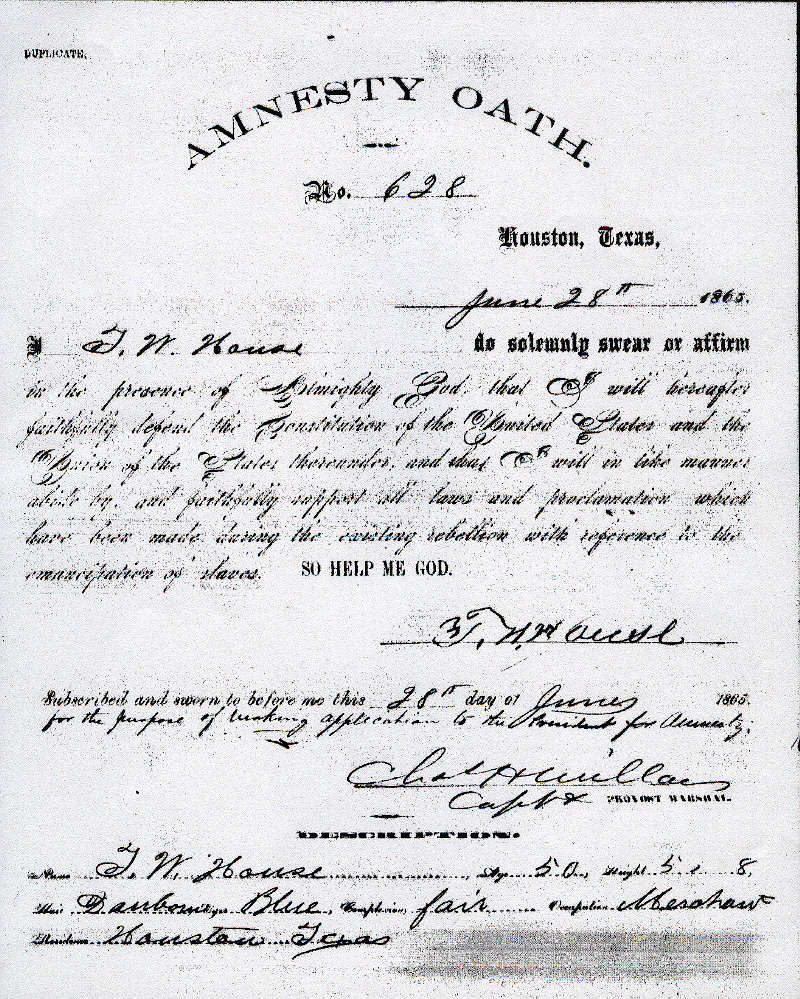
Here is a letter against granting T. W. House Amnesty
written Sept 14, 1865
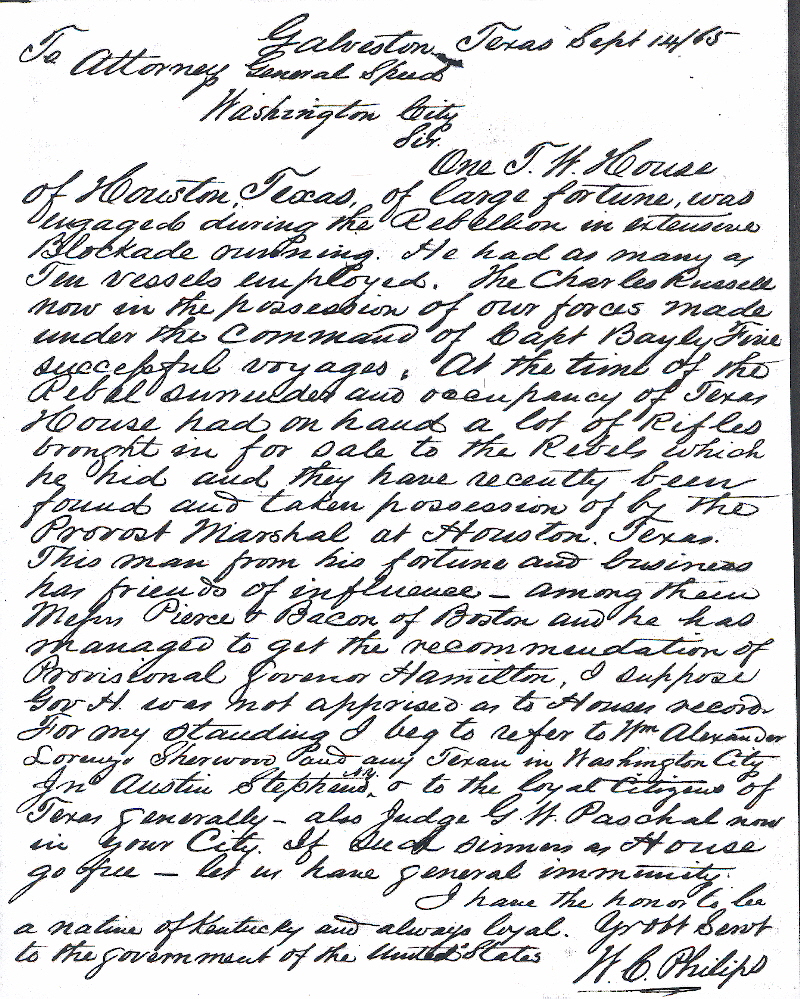
Amnesty number 263
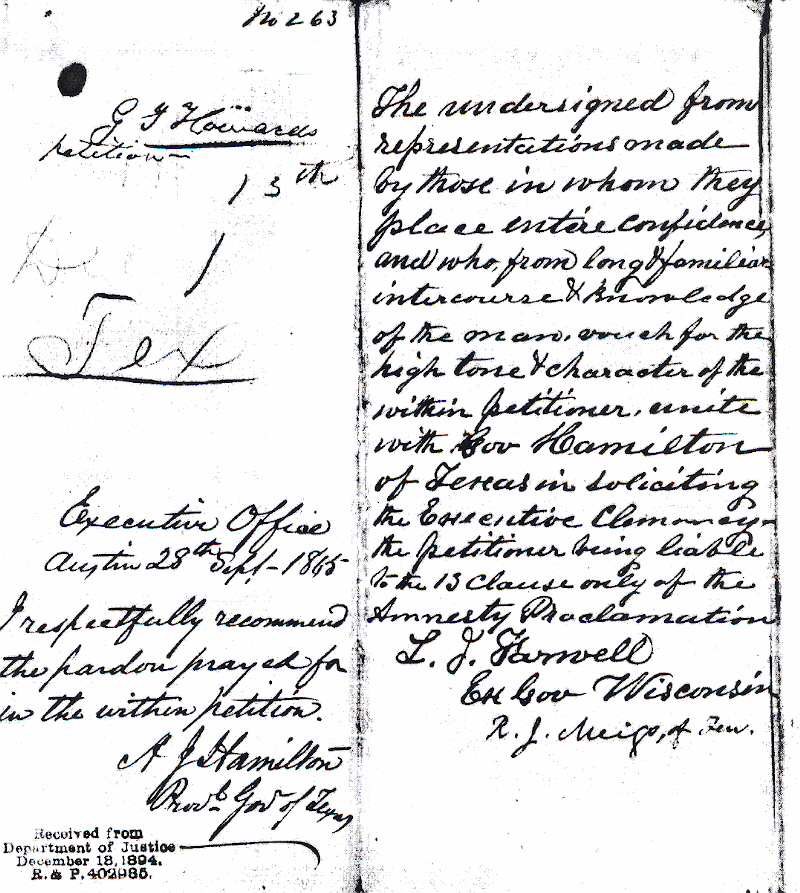
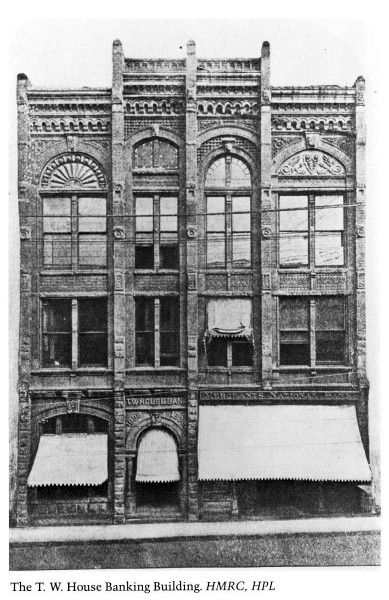
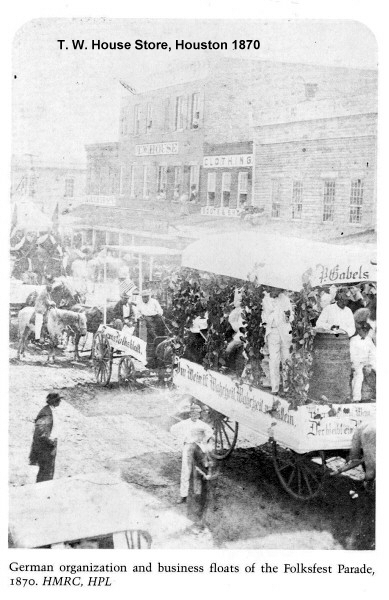
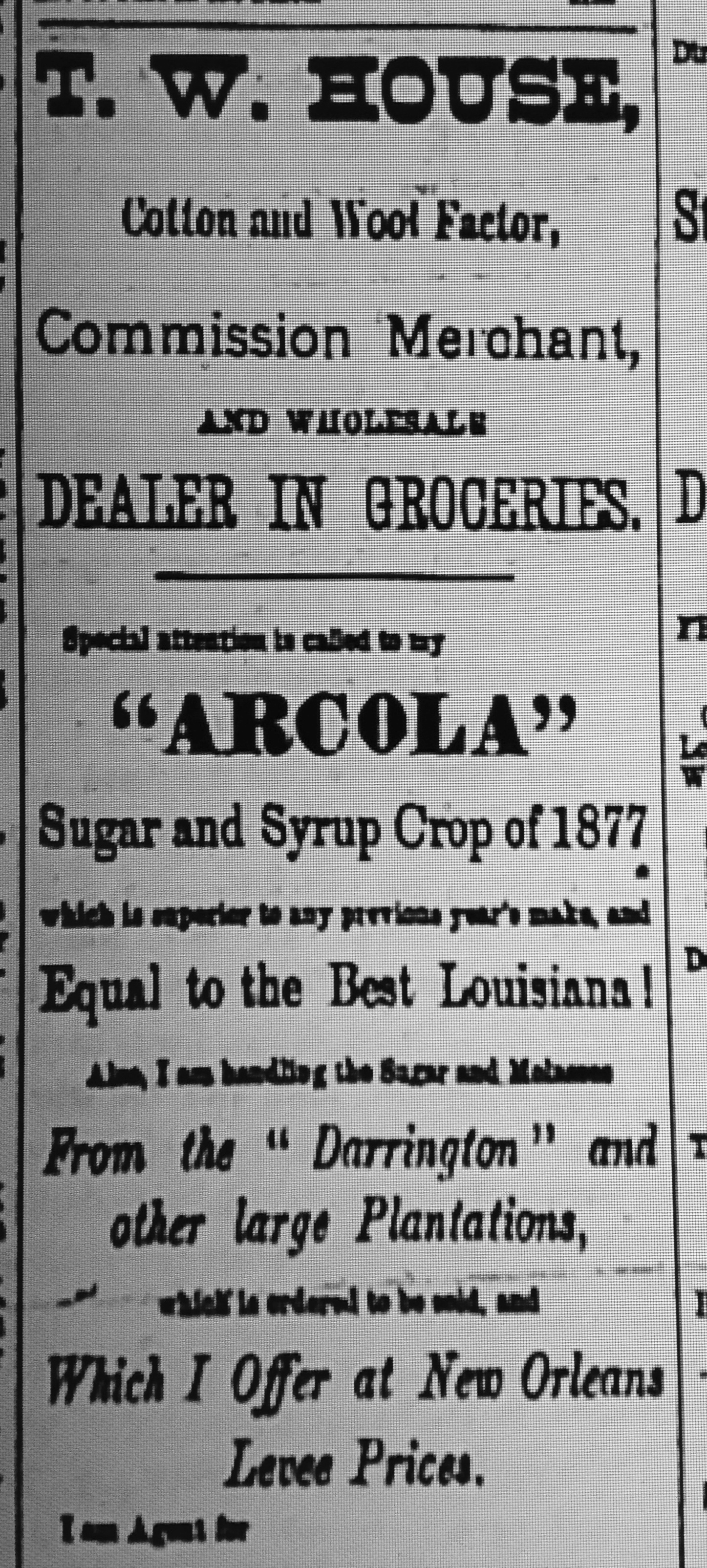
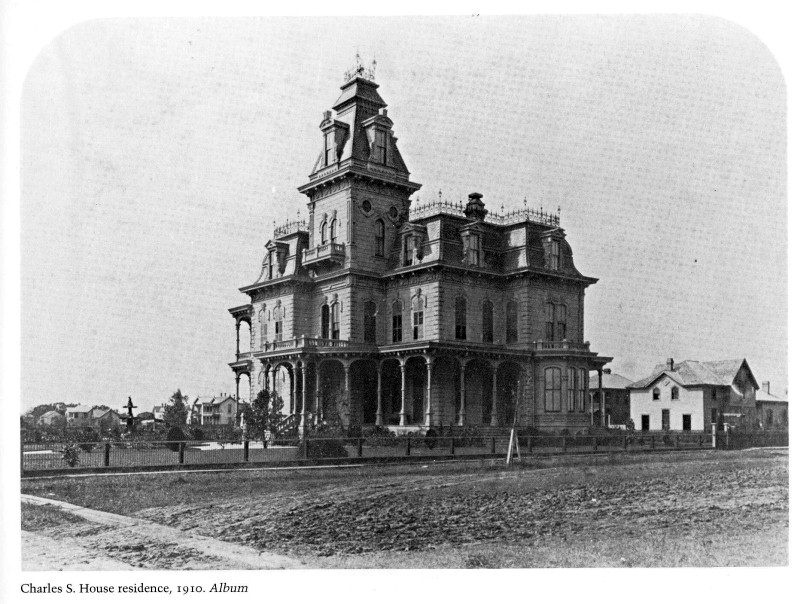
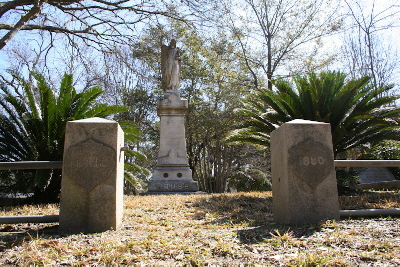
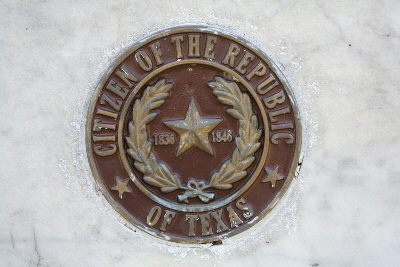
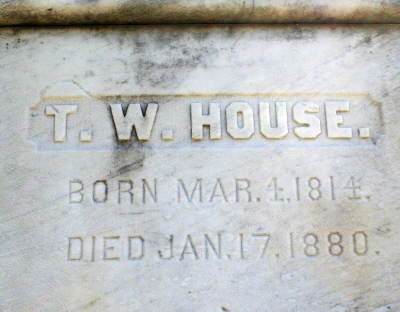
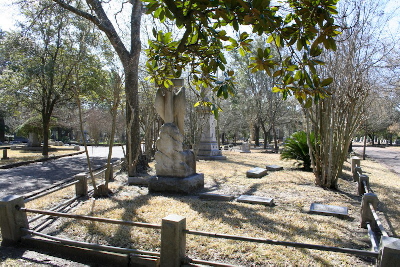
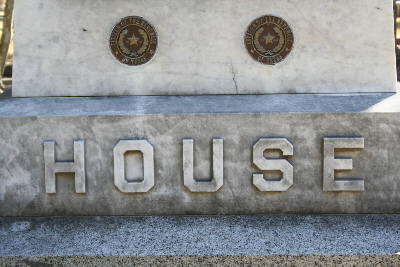
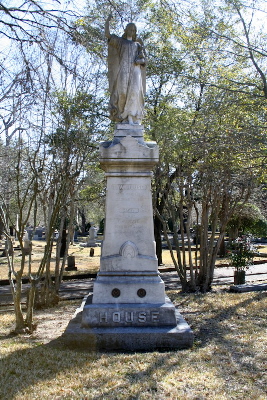
T. W. House was deeply associated with the Shearn Church [his partner and brother in law] even though he never became a member.
To read this fine Eulogy click here.
or
Go to Home Page

























